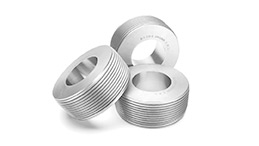
Sep . 08, 2024 20:00
Back to list
pneumatic valve
Understanding Pneumatic Valves A Comprehensive Overview
Pneumatic valves play a crucial role in various industrial applications, enabling the control and regulation of compressed air systems. These valves act as the nerve center of a pneumatic system, dictating the flow and pressure of air within the circuitry. Their functionality is critical for applications ranging from manufacturing and automation to packaging and robotics.
At its core, a pneumatic valve is designed to direct and control the flow of compressed air to actuators, such as cylinders and motors
. This manipulation is essential for converting pneumatic energy into mechanical motion. Pneumatic valves come in different configurations and types, including solenoid valves, directional control valves, and pressure relief valves, each serving a unique function in the system.Solenoid valves are among the most common types, utilizing an electromagnetic coil to operate. When activated, the coil generates a magnetic field, moving a plunger that opens or closes the valve, effectively controlling air flow. They are particularly favored for their quick response times and reliability, making them ideal for applications requiring precise control.
pneumatic valve

Directional control valves, on the other hand, are designed to manage the direction of airflow in a pneumatic system. These valves can be operated manually, mechanically, or electrically, and often come in various configurations like 2/2, 3/2, or 4/2 functions. The number designates the number of ports and positions the valve can attain, allowing for diverse applications, such as switching the motion direction of a double-acting cylinder.
Pressure relief valves serve a different purpose; they are crucial for safety. These valves prevent excessive pressure buildup in pneumatic systems by automatically venting air when predetermined pressure limits are exceeded. This feature protects machinery and personnel from potential dangers associated with over-pressurization.
The selection of a pneumatic valve hinges on several factors, including the specific application, the operating environment, and flow characteristics. Engineers must consider parameters such as pressure rating, size, and response time when choosing the right valve for their systems.
In conclusion, pneumatic valves are essential components within pneumatic systems. Understanding their functions and types helps industries optimize their operations, ensuring efficiency and safety in processes that rely on compressed air. As technology advances, the evolution of pneumatic valve design continues, promising even better performance and reliability in the future.
Next:
Latest news
-
Safety Valve Spring-Loaded Design Overpressure ProtectionNewsJul.25,2025
-
Precision Voltage Regulator AC5 Accuracy Grade PerformanceNewsJul.25,2025
-
Natural Gas Pressure Regulating Skid Industrial Pipeline ApplicationsNewsJul.25,2025
-
Natural Gas Filter Stainless Steel Mesh Element DesignNewsJul.25,2025
-
Gas Pressure Regulator Valve Direct-Acting Spring-Loaded DesignNewsJul.25,2025
-
Decompression Equipment Multi-Stage Heat Exchange System DesignNewsJul.25,2025

